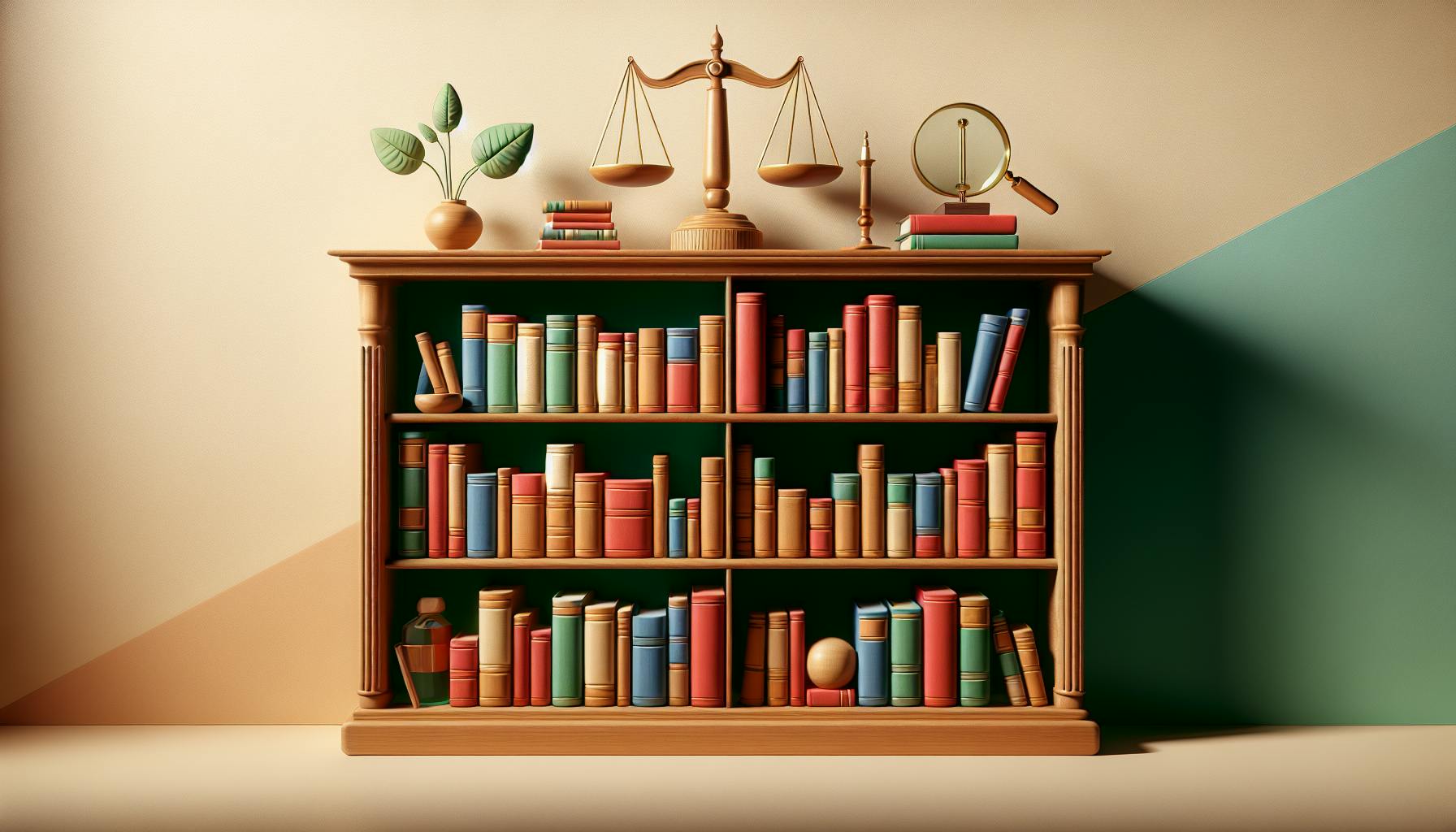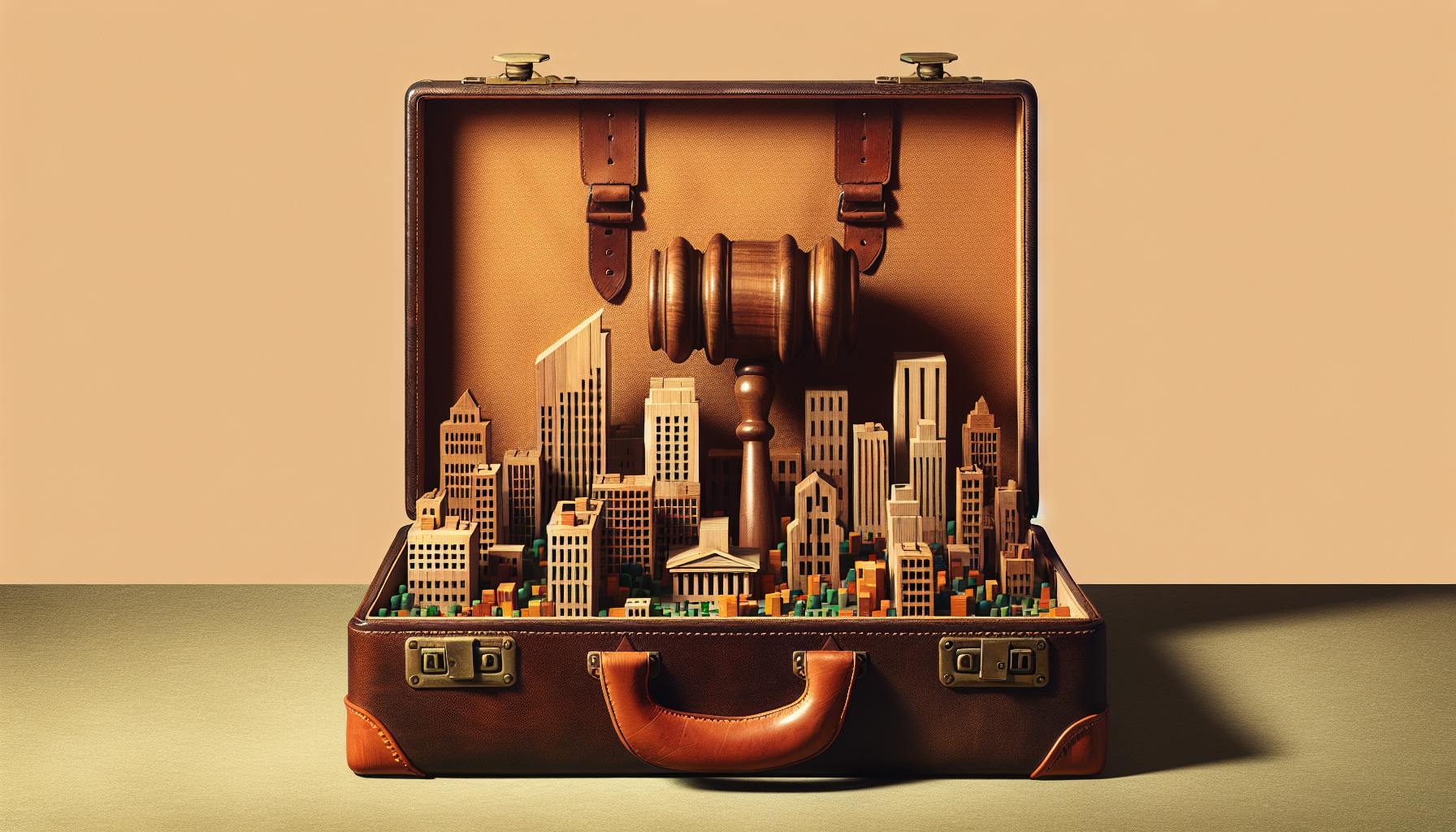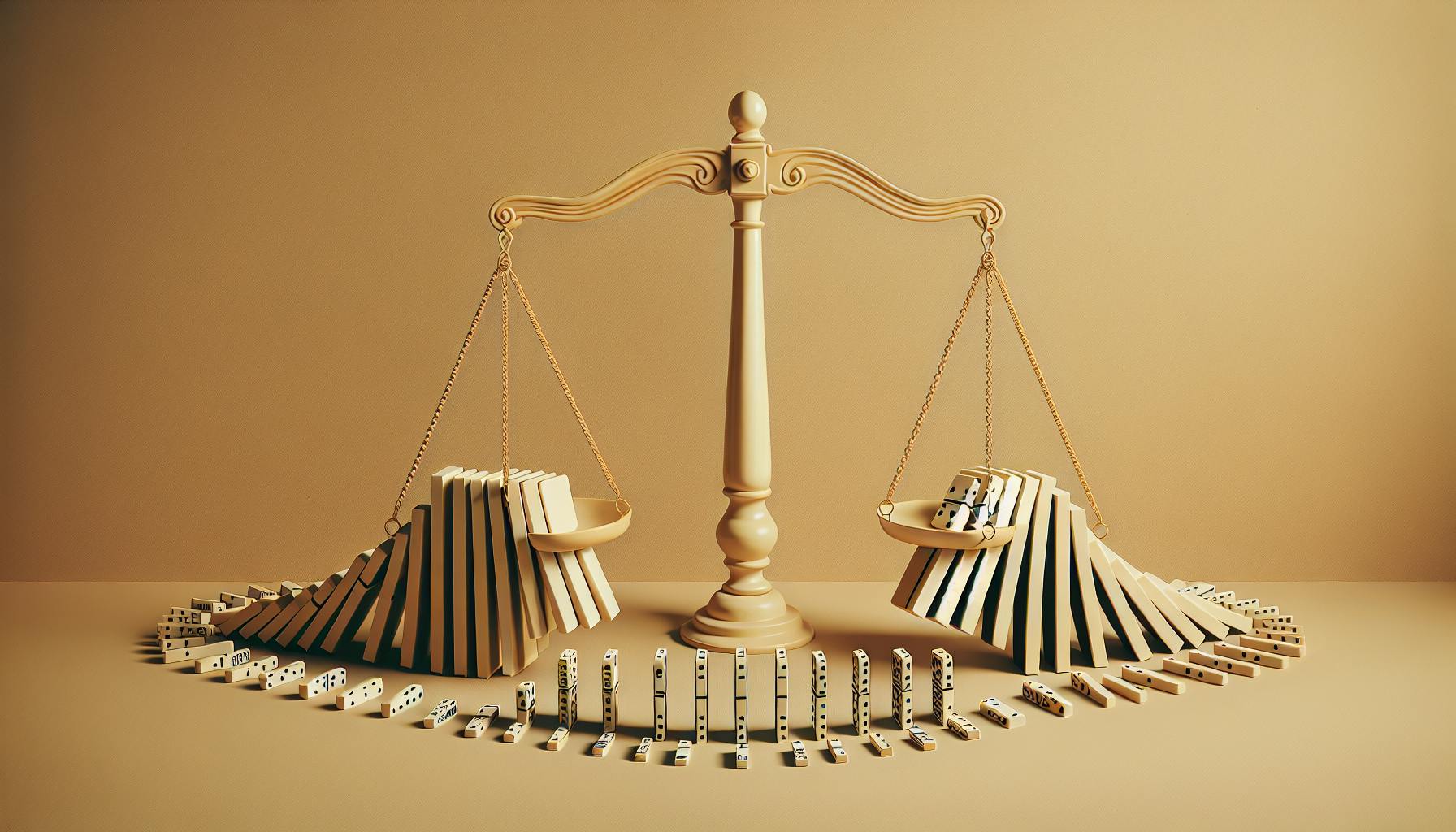Most would agree that banning alcohol nationwide seemed extreme at the time.
Yet the 18th Amendment did just that - it led to the prohibition of alcohol across America.
This article explores the origins of prohibition, its implementation and challenges with enforcement, the rise of organized crime, and ultimately, the repeal of this controversial amendment.
Introduction to the Eighteenth Amendment and Prohibition of Alcohol
The Eighteenth Amendment was ratified in 1919, banning the manufacture, transportation, and sale of intoxicating liquors in the United States. This launched the Prohibition era from 1920-1933.
The temperance movement, aimed at curbing alcohol consumption, had been gathering momentum since the early 1800s. Groups like the Anti-Saloon League lobbied tirelessly for prohibition, viewing alcohol as a destructive force in society.
With the ratification of the Eighteenth Amendment, the production and distribution of alcohol became illegal. However, Prohibition was extremely difficult to enforce. Bootlegging and speakeasies flourished, and organized crime expanded to meet the demand for illegal alcohol.
By the early 1930s, the "noble experiment" was widely seen as a failure. In 1933, Prohibition was repealed with the ratification of the Twenty-First Amendment.
Origins of the Temperance Movement
The temperance movement emerged in the early 1800s over growing concerns about the social effects of alcohol consumption. Religious groups, women's rights activists and others advocated temperance - moderation or self-restraint in drinking alcoholic beverages.
Organizations like the American Temperance Society formed to promote temperance education and getting people to sign temperance pledges. Over time, the movement shifted its goal towards complete prohibition of alcohol production and sale.
The Road to the Eighteenth Amendment
In the late 19th century, the Anti-Saloon League became a powerful political force, using pressure tactics to influence legislators to pass dry laws banning liquor sales. The League allied with organizations like the Woman’s Christian Temperance Union to advocate for national prohibition.
In 1917, the 65th Congress proposed the Eighteenth Amendment. It banned the manufacture, sale or transportation of intoxicating liquors in the United States. The Amendment was ratified on January 16, 1919, marking the beginning of national Prohibition.
The Role of Key Temperance Organizations
The Anti-Saloon League was the most influential organization lobbying for Prohibition in the early 20th century. Using pressure politics, it influenced elections and drove many towns and counties to go “dry” before national Prohibition.
The Woman’s Christian Temperance Union, founded in 1874, also played a key role. With its slogan “For God, Home and Native Land”, it advanced social reform causes like Prohibition, appealing strongly to Protestant women voters.
In the 1870s, the Prohibition Party became the first political party to have a women's suffrage plank in its platform. It nominated women for public office over 40 years before any other political party.
Public Perception and Support for Prohibition
Many Americans supported Prohibition, believing it would improve society by reducing crime and corruption caused by alcohol consumption. However, national Prohibition was also widely resisted from the start, especially in urban areas.
Bootlegging and rum-running operations expanded to meet demand for illegal liquor. Speakeasies proliferated as people flouted the new law. In the end, diminishing public support contributed to the repeal of Prohibition with the Twenty-first Amendment in 1933.
What's the 18th Amendment in simple terms?
The Eighteenth Amendment, passed in 1919, instituted a nationwide prohibition on the production, transportation, and sale of alcoholic beverages in the United States.
In simple terms, the 18th Amendment made it illegal to make, transport, or sell alcoholic drinks like beer, wine, and liquor across the country. Here are some key points about the 18th Amendment:
- It did not ban the consumption or private possession of alcohol - it focused on halting commercial production and distribution.
- To enforce the new restrictions, it gave concurrent power to federal and state authorities.
- It marked the culmination of a decades-long temperance movement pressing for a ban on alcohol.
- The accompanying Volstead Act defined "intoxicating liquors" barred under the amendment, excluded some exceptions like religious wine, and set penalties.
- Prohibition went into effect in 1920 and lasted over a decade before being repealed by the 21st Amendment in 1933.
- The ban on alcohol led to negative consequences like a rise in organized crime and black market alcohol production and distribution.
In summary, the 18th Amendment instituted a nationwide ban in the United States on commercially producing and selling alcoholic drinks. It did not make drinking itself illegal. The ultimately unsuccessful experiment lasted 13 years before being cancelled by the 21st Amendment.
Did the 18th Amendment make the and of alcohol illegal?
The 18th Amendment, ratified on January 16, 1919, did make the manufacture, sale, and transportation of alcoholic beverages illegal in the United States. Specifically, the amendment stated:
After one year from the ratification of this article the manufacture, sale, or transportation of intoxicating liquors within, the importation thereof into, or the exportation thereof from the United States and all territory subject to the jurisdiction thereof for beverage purposes is hereby prohibited.
This began the period known as Prohibition, which lasted from 1920 to 1933. The amendment gave Congress and the states concurrent power to enforce this prohibition through legislation. As a result, the National Prohibition Act, commonly known as the Volstead Act, was enacted to provide enforcement guidelines.
The 18th Amendment was ultimately repealed by the 21st Amendment in 1933, ending the nationwide prohibition of alcohol. However, it marked a significant period in American history that led to widespread illegal activity, challenges in enforcement, and debates over personal freedom versus morality legislation. Its legacy continues to shape conversations around substance regulation even today.
So in summary, yes, the 18th Amendment did directly prohibit the manufacture, sale, and transportation of liquor, wine, beer and other alcoholic drinks for over a decade in America. This "noble experiment" of banning alcohol nationwide was unprecedented but proved extremely difficult to enforce before its repeal.
What Amendment led to the ban of alcohol?
The Eighteenth Amendment to the United States Constitution established national Prohibition in the United States. Ratified on January 16, 1919, it prohibited the manufacture, sale, or transportation of intoxicating liquors within the United States and its territories. This amendment led to a nationwide constitutional ban on the production and sale of alcoholic beverages from 1920 to 1933.
The Eighteenth Amendment was the result of decades of advocacy by the temperance movement, which aimed to curb the negative effects of excessive alcohol consumption in society. Key groups behind this movement included the Anti-Saloon League, the Woman's Christian Temperance Union, and rural Protestants.
During the 14 years that the Eighteenth Amendment was in effect, Prohibition led to many unintended consequences. Illegal distribution and consumption of liquor flourished, giving rise to bootlegging and speakeasies. Organized crime increased in many cities to control the distribution of alcoholic beverages. The amendment was difficult to enforce at the federal level, and many people continued consuming alcohol despite the ban.
In 1933, the Twenty-First Amendment was ratified to repeal the Eighteenth Amendment, ending the era known as Prohibition. However, some states and counties today still have laws restricting or banning the sale of alcohol. The legacy of Prohibition continues to influence alcohol policy and regulation in the United States.
What was the prohibition summary?
Prohibition was a nationwide constitutional ban on the production, importation, transportation, and sale of alcoholic beverages from 1920 to 1933.
The prohibition movement, led by rural Protestants and urban Progressives, aimed to reduce crime, poverty, and other societal ills by eliminating alcohol consumption. Years of activism and lobbying by groups such as the Anti-Saloon League and the Woman's Christian Temperance Union led to the ratification of the Eighteenth Amendment in 1919, which banned the manufacture, sale, and transportation of intoxicating liquors.
The Volstead Act was passed in October 1919 to provide enforcement guidelines. It defined "intoxicating liquors" as any beverage containing more than 0.5% alcohol.
Prohibition went into effect in January 1920. The federal government had hoped it would reduce crime and poverty rates, but it was largely unsuccessful. Bootlegging operations, speakeasies, and organized crime flourished. Public support for Prohibition declined throughout the 1920s. In 1933, the Twenty-First Amendment repealed the Eighteenth Amendment, ending the era known as Prohibition.
sbb-itb-e93bf99
sbb-itb-e93bf99
The Ratification and Implementation of the Eighteenth Amendment
Congressional Passage and State Ratification
The Eighteenth Amendment was proposed in 1917 and ratified in 1919. It prohibited the manufacture, sale, and transportation of intoxicating liquors in the United States.
Congress passed the amendment with the required two-thirds vote in December 1917. The amendment then went to the states for ratification. It was ratified by the required three-fourths of the states in January 1919 when Nebraska became the 36th state to ratify it.
The Volstead Act: Defining and Enforcing Prohibition
The Volstead Act was passed in October 1919 to provide the legislation necessary to enforce Prohibition under the Eighteenth Amendment. It defined "intoxicating liquors" as any beverage containing more than 0.5% alcohol. It also specified penalties for violating Prohibition.
The Volstead Act charged the Treasury Department with enforcement of Prohibition. It allocated funds to hire around 1,500 federal Prohibition agents along with resources for federal prosecution of bootleggers.
Immediate Effects on the Alcohol Industry
The alcohol industry was severely impacted by Prohibition going into effect in 1920. Thousands of bars, distilleries and breweries went out of business. Vineyards ripped out their grape vines and a number of winemakers went bankrupt.
There was an exemption allowing liquor prescribed by a physician. This led to some pharmacies obtaining liquor licenses. However, most legitimate avenues for alcohol distribution shut down due to the Amendment.
Public Reaction to the Onset of Prohibition
Many progressive and religious groups had lobbied for Prohibition and strongly supported its passage. However, others were angry at the government interfering in what they saw as a personal freedom. Speak-easies emerged providing illegal liquor supplied by bootleggers and rum-runners. Organized crime increasingly controlled the illicit liquor industry and associated violence increased.
Enforcement Challenges and the Rise of Speakeasies
The Volstead Act's Enforcement Hurdles
The Volstead Act, passed to enforce Prohibition in 1919, faced significant challenges. With no centralized agency to oversee enforcement, responsibility fell to local and state authorities who were often understaffed and underfunded. Bootlegging and rum-running operations also emerged, smuggling liquor from Canada and overseas. Limited resources made it difficult for law enforcement to combat the illegal alcohol trade.
Speakeasies: Illicit Havens for Liquor
With liquor banned, speakeasies - secretive drinking establishments - began proliferating nationwide. Hidden in basements, attics and warehouses, speakeasies served liquor smuggled by bootleggers and rum-runners. Patrons gained entry via passwords or secret knocks, and bribed police to turn a blind eye. At their peak in the late 1920s, there were over 100,000 speakeasies across the United States.
The Bureau of Prohibition's Role
To strengthen enforcement, the federal Bureau of Prohibition was established in 1920. With agents nationwide, their responsibilities included raiding speakeasies, intercepting smuggled liquor imports and investigating bootlegging operations. They also regulated permits for legal medicinal liquor prescribed by doctors. But with limited personnel, the Bureau found enforcement extremely challenging.
Eliot Ness and the Untouchables
In Chicago, Federal agent Eliot Ness assembled an elite team of incorruptible agents dubbed "The Untouchables" to combat liquor traffickers. Their efforts helped dismantle parts of Al Capone's operations. But despite such efforts, nationwide enforcement remained largely ineffective. By the early 1930s, support grew for Prohibition’s repeal.
Bootlegging, Rum-Running, and Organized Crime
The Advent of Bootlegging and Moonshine
The prohibition of alcohol led many people to start illegally making and distributing homemade liquor, known as "moonshine." Bootlegging emerged as an underground economy, with illegal speakeasies and distribution networks popping up around the country to meet demand for alcohol. Many people began distilling their own moonshine using makeshift stills, leading to issues with quality control and safety.
Rum-Running: Smuggling on a National Scale
With alcohol banned domestically, smuggling liquor in from abroad became big business. Rum-running involved smuggling large quantities of alcohol across borders or by sea. Rum-runners used complex distribution chains and logistics, sometimes relying on corruption and bribes to move shipments. Rum-running was risky but lucrative, although many were caught by border and coast patrols.
Mafia Influence and the Reign of Al Capone
Gangsters and organized crime seized on Prohibition as a means to build vast criminal empires. The most notorious was Al Capone in Chicago, who controlled bootlegging and raked in multi-million dollar profits. The demand for illegal liquor allowed Capone to gain influence through bribes and violence. Many mafia groups across the country similarly amassed power and wealth.
Corruption and Law Enforcement Complicity
Widespread corruption accompanied Prohibition, as mobsters paid off police, judges, and politicians to maintain their illegal liquor operations. Additionally, lack of funding made it difficult for federal agencies like the Prohibition Unit to effectively enforce the Volstead Act. These factors allowed bootlegging and rum-running to thrive, even as dry agents raided illegal speakeasies and attempted to stop the flow of black market liquor.
The Repeal of Prohibition and the Twenty-First Amendment
Prohibition was ultimately repealed with the ratification of the Twenty-first Amendment in 1933. This reversal was driven by a confluence of factors, including economic pressures, shifting public attitudes, and political dynamics.
The Great Depression's Influence on Repeal
The onset of the Great Depression in 1929 created immense financial strains across American society. Tax revenues plunged as economic activity contracted. At the same time, expenditures on poor relief and unemployment benefits skyrocketed. This fiscal squeeze led many to question the feasibility of Prohibition, which had eliminated tax revenues from the production and sale of alcoholic beverages.
There was also a growing recognition that Prohibition was encouraging criminal activity rather than curbing it. The demand for illegal liquor lined the pockets of bootleggers and crime syndicates. As more Americans struggled financially, the prospect of repealing Prohibition and taxing legal alcohol sales became increasingly appealing.
Franklin D. Roosevelt and the Democratic Push for Repeal
As Governor of New York, Franklin D. Roosevelt had already called for modifying Volstead Act enforcement in his state. As a presidential candidate in 1932, he made clear his stance for repeal. His landslide victory, along with Democratic victories in Congress, gave the repeal movement momentum.
The Democratic Party's 1932 platform had contained only a vague reference to adjustment of the Volstead Act. But the party lined up solidly behind repeal in the months following Roosevelt's election. Democrats argued that legalizing alcohol would generate much-needed revenue in the midst of the Depression.
The Passage of the Twenty-First Amendment
In February 1933, Congress adopted a resolution proposing the Twenty-first Amendment to repeal Prohibition. The resolution swiftly obtained the necessary two-thirds vote in the House and Senate and was sent to the states for ratification.
Led by New York, state conventions moved rapidly to ratify the new amendment. By December 5, 1933, Utah provided the 36th ratification necessary to add the amendment to the Constitution. Prohibition was officially repealed, removing the federal constitutional ban on alcohol.
The Aftermath: From Prohibition to Regulation
While the Twenty-first Amendment repealed national Prohibition, it gave states power to regulate the importation and distribution of alcohol within their own borders. Many states chose to retain certain Prohibition-era restrictions on alcohol sales.
The production and consumption of alcoholic beverages was once again legal across America. But regulations and enforcement practices varied widely between states in the post-Prohibition era. This shifting landscape marked a new chapter in the complex relationship between Americans and alcohol.
Prohibition's Enduring Impact on American Society
Legal Legacy: Dry Counties and Alcohol Laws
Prohibition led to the establishment of "dry counties" in some parts of the United States where the sale of alcohol remains prohibited. As of 2022, there were still over 500 dry counties across the country. This patchwork of local alcohol regulations continues to shape alcohol policy today.
States also gained more power to regulate alcohol sales within their borders after the 21st Amendment repealed national Prohibition. This has resulted in a complex legal environment around alcohol access and licensing laws in different parts of the country. For example, some states have very restrictive rules around selling spirits or wine in grocery stores.
Cultural Shifts: The Roaring Twenties and Beyond
The Roaring Twenties embodied a cultural rebellion against the restrictions of Prohibition. Illicit speakeasies flourished, serving illegal liquor. This led to a more defiant, risk-taking youth culture that pushed social boundaries.
Beyond the 1920s, Prohibition brought drinking into private residences and out of public view in saloons. Some scholars argue this paved the way for alcohol to become more integrated into family life and social functions.
There were also demographic shifts, as women began entering the workforce during WWI and secured the right to vote. The temperance movement lost momentum with such societal changes.
Prohibition's Cautionary Tale to Modern Lawmakers
Prohibition exemplifies the difficulties of banning popular vices with widespread public demand. The failed social experiment serves as a lesson for policymakers on the limits of using legislation to control behavior.
It also showcases the need to consider potential unintended consequences of prohibition laws, like fueling organized crime. There are parallels to modern debates around banning other substances.
Ultimately, Prohibition revealed the complexities of regulating morality versus taking a public health approach to substance abuse issues. These insights remain relevant today.
Ongoing Debates Over Alcohol Policy
While Prohibition ended decades ago, debates continue around alcohol regulations and policies:
-
Public health groups advocate to limit alcohol access and advertising, curb binge drinking, and reduce drunk driving fatalities.
-
The alcohol industry lobbies against tax hikes and restrictions on sales.
-
Local governments grapple with balancing economic benefits of alcohol production and sales with societal costs of alcohol abuse.
These discussions connect back to the temperance movement’s view of alcohol as a social ill, contrasted with the industry’s argument that moderate drinking is a personal choice. Prohibition’s legacy shapes these policy perspectives today.


